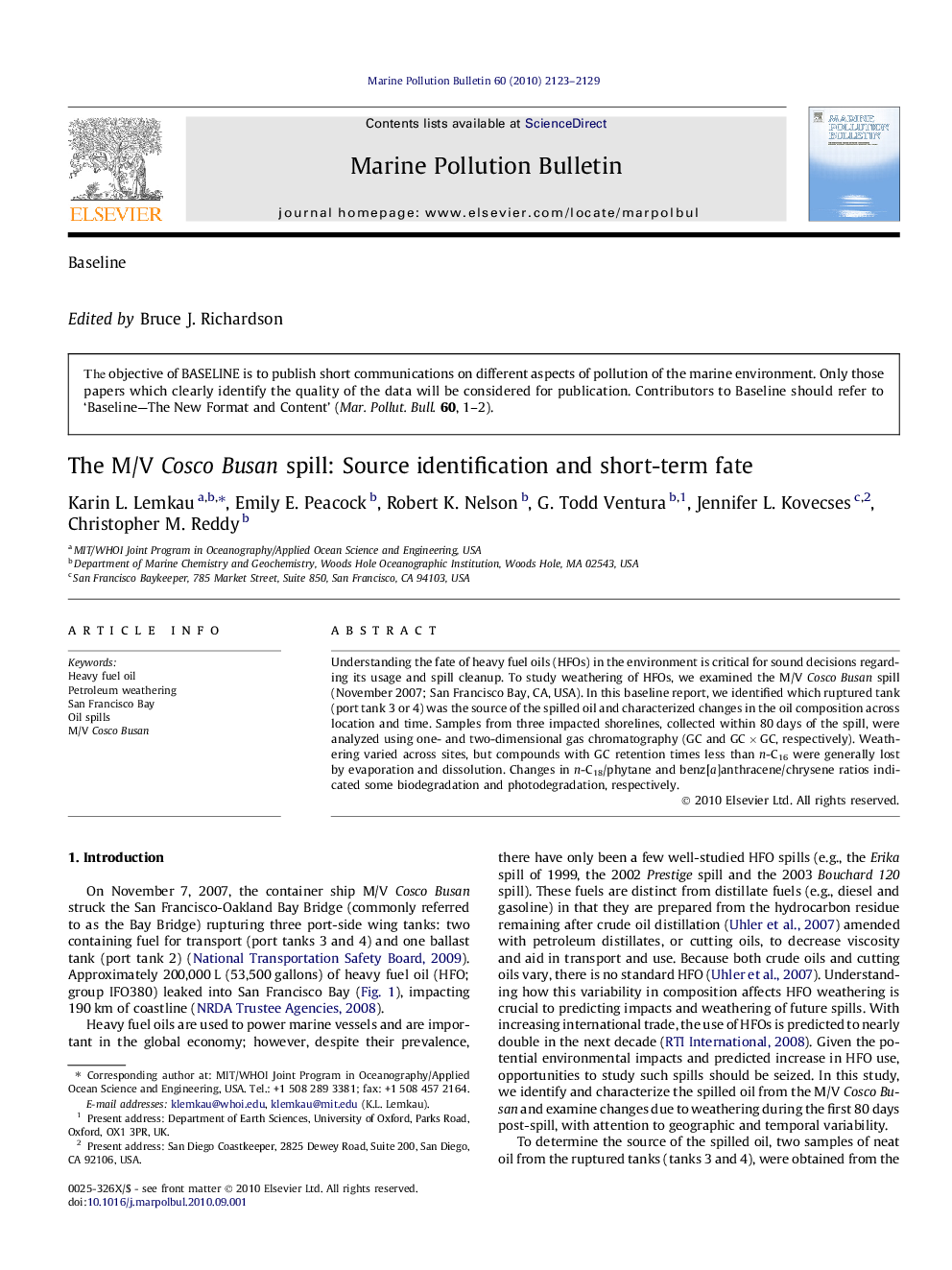| Article ID | Journal | Published Year | Pages | File Type |
|---|---|---|---|---|
| 6362306 | Marine Pollution Bulletin | 2010 | 7 Pages |
Abstract
Understanding the fate of heavy fuel oils (HFOs) in the environment is critical for sound decisions regarding its usage and spill cleanup. To study weathering of HFOs, we examined the M/V Cosco Busan spill (November 2007; San Francisco Bay, CA, USA). In this baseline report, we identified which ruptured tank (port tank 3 or 4) was the source of the spilled oil and characterized changes in the oil composition across location and time. Samples from three impacted shorelines, collected within 80Â days of the spill, were analyzed using one- and two-dimensional gas chromatography (GC and GCÂ ÃÂ GC, respectively). Weathering varied across sites, but compounds with GC retention times less than n-C16 were generally lost by evaporation and dissolution. Changes in n-C18/phytane and benz[a]anthracene/chrysene ratios indicated some biodegradation and photodegradation, respectively.
Related Topics
Physical Sciences and Engineering
Earth and Planetary Sciences
Oceanography
Authors
Karin L. Lemkau, Emily E. Peacock, Robert K. Nelson, G. Todd Ventura, Jennifer L. Kovecses, Christopher M. Reddy,
